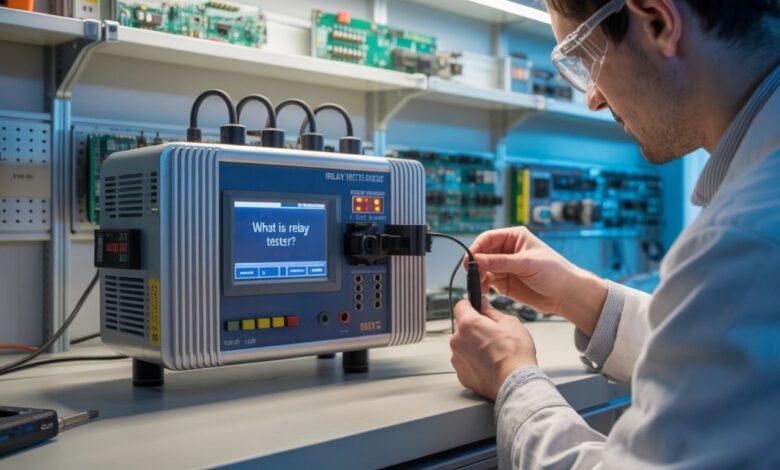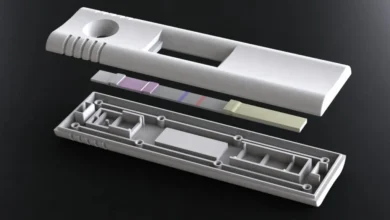What Is a Relay Tester? The Ultimate Guide for Engineers, Technicians, and Enthusiasts

Introduction
In electrical systems, reliability is key. Whether it’s a complex substation or a simple automotive circuit, relays play an essential role in switching operations. These components serve as bridges between control signals and power circuits, allowing for safe, automated system performance. However, over time, relays can degrade, leading to malfunctions, downtime, or even hazardous situations. Ensuring that relays function as intended is where a relay tester becomes invaluable. This guide explores what a relay tester is, how it works, its various types, and how to choose the right one for your application.
What Is a Relay Tester?
A relay tester is a diagnostic tool used to assess the operational performance of electrical relays. It works by simulating standard or extreme operating conditions to observe how a relay responds. By applying voltage, current, or control signals to the relay, the tester helps determine whether the relay switches appropriately within its rated limits.
These testers are vital for validating the functionality of relays in both newly installed systems and those undergoing routine maintenance. In industries like energy, manufacturing, and transportation, relay testers ensure safety, minimize unplanned outages, and extend equipment lifespan.
What Is a Relay Used For?
Relays are used to control high-power circuits with low-power signals, making them critical components in automation and safety systems. Their applications include:
- Power Distribution Systems: For switching, protection, and load management.
- Automotive Circuits: In controlling lights, fuel pumps, fans, and starters.
- Home Appliances: Enabling on/off control in washing machines, HVAC systems, and microwaves.
- Industrial Automation: To control motors, alarms, conveyor belts, and robotic systems.
Their ability to provide electrical isolation also protects control circuits from high-voltage spikes, ensuring both user safety and component longevity.
Types of Relay Testers
Manual Relay Testers
Manual relay testers are the most cost-effective and straightforward devices available. They are typically used in settings where advanced automation isn’t required. These testers involve knobs, dials, and switches to manually adjust test conditions. The readings are usually interpreted visually, which means operator experience plays a big role in ensuring accurate results.
While they may lack advanced features, manual testers are favored for their durability, simplicity, and affordability, making them ideal for educational labs or low-frequency testing needs.
Digital Relay Testers
Digital relay testers are equipped with microprocessors and sophisticated software. These devices can run automated test sequences, measure multiple parameters simultaneously, and store or transmit results for further analysis. Their data logging capabilities allow for historical comparison and regulatory compliance.
Digital testers are widely used in high-demand environments, such as power substations and manufacturing plants, where precision and repeatability are paramount. They often come with PC software that enables remote testing, automated reports, and calibration features.
Portable vs. Stationary Relay Testers
Portable
Portable relay testers are lightweight, battery-powered, and designed for fieldwork. They offer convenience and flexibility, allowing technicians to perform on-site diagnostics without needing to transport heavy equipment. These are ideal for field service engineers, substation maintenance crews, and remote facility technicians.
Stationary
Stationary testers are bulkier but more powerful, offering more comprehensive testing capabilities. Typically installed in laboratories or control rooms, they are ideal for testing large volumes of relays or conducting detailed research and development. Stationary testers may integrate with other equipment for multi-component system diagnostics.
How Does a Relay Tester Work?
A relay tester applies specific input signals, such as voltage or current, to the relay’s coil terminals. When the coil is energized, it triggers a mechanical or solid-state switching action, which the tester monitors at the output terminals. Key performance factors evaluated include:
- Coil Resistance: Determines whether the electromagnetic coil is intact and functioning within design limits.
- Response Time: Measures the time it takes for the relay to actuate after receiving a signal.
- Contact Functionality: Checks if the contacts are switching cleanly without bounce or delay.
Some testers even simulate fault conditions like overvoltage or undervoltage to observe how the relay behaves in critical scenarios.
Applications of Relay Testers
Relay testers are used across various industries and serve both operational and preventive roles. Some common applications include:
- Power System Substations: Verifying protection relays that trip breakers during faults.
- Automotive Diagnostics: Troubleshooting relay-operated systems in cars, trucks, and EVs.
- Industrial Automation: Ensuring that relays used in programmable logic controllers (PLCs) or motor controllers perform reliably.
- Maintenance Inspections: Regular testing to prevent breakdowns and meet safety regulations.
Proper use of a relay tester reduces unplanned downtime, improves safety, and supports predictive maintenance strategies.
Features to Look for in a Relay Tester
Choosing the right relay tester involves evaluating several important features:
- High Accuracy and Sensitivity: Especially for relays with fast switching times or minimal tolerance.
- User-Friendly Interface: Touchscreens, backlit displays, and intuitive controls improve usability.
- Data Logging and Export Capability: Useful for audits, certifications, and maintenance records.
- Multi-Voltage and Current Testing: To accommodate various relay types (AC, DC, solid-state).
- Certification Compliance: Devices that meet IEC or ANSI standards ensure industry compatibility and trust.
Advanced testers may also offer features like Bluetooth connectivity, PC software integration, or cloud-based report sharing.
Top Brands and Models of Relay Testers
When reliability matters, choosing a trusted brand can make all the difference. Here are some top manufacturers and models:
- Omicron – CMC Series: Known for precision and versatility. Common in electrical substations and grid testing.
- Megger – SMRT Series: Modular design, remote control options, and excellent support make this a favorite among industrial users.
- Fluke: Offers handheld testers suitable for quick, on-the-go diagnostics, particularly in automotive and facility maintenance.
These brands often offer a variety of models, from basic testers to advanced multi-function testing stations.
Common Issues and Troubleshooting with Relay Testers
Despite their usefulness, relay testers can encounter a few issues. Here are the most common problems and their solutions:
| Issue | Cause | Solution |
| Calibration Drift | Regular wear or environmental changes | Perform periodic calibration per the guidelines |
| Damaged Test Leads | Physical damage or exposure to heat | Replace damaged cables immediately |
| EMI Interference | Nearby high-power equipment or radio signals | Use shielding or test in a quieter location |
| Incorrect Settings | User error or unfamiliar interface | Refer to the user manual and attend training |
Being proactive with equipment checks can help prevent these problems.
Buying Guide: Choosing the Right Relay Tester
Before investing in a relay tester, consider the following:
- Usage Frequency: Occasional testing may only require a manual or basic digital model.
- System Complexity: More intricate systems benefit from programmable or multi-functional testers.
- Portability Needs: Determine if you need a lightweight, mobile solution or a full-featured, stationary setup.
- Software Support and Warranty: Look for products that offer regular updates, detailed documentation, and reliable customer support.
- Budget Constraints: Compare features within your price range to get the best value.
Always read product reviews and, if possible, request a demo or consultation to ensure the device meets your exact needs.
FAQs about Relay Testers
What is a relay tester?
A device used to evaluate the performance and condition of relays by applying test signals and measuring outputs.
What is a relay used for?
To control one electrical circuit by opening and closing contacts in another circuit, offering control and isolation.
What is a relay testing engineer?
A professional responsible for testing, analyzing, and maintaining relay protection systems in electrical networks.
How do you check if a relay is bad?
Use a relay tester or multimeter to check continuity, coil resistance, and whether the relay actuates properly under test conditions.
Where is the relay used?
In vehicles, industrial control systems, power grids, HVAC systems, and home automation.
Why do you need a relay?
To safely control high-voltage or high-current devices using low-voltage signals.
What causes relay failure?
Contact arcing, coil burnout, dirt, mechanical wear, or incorrect voltage application.
How to read a relay?
Refer to the relay diagram printed on the casing. Understand pin configuration: common, normally open (NO), normally closed (NC), and coil terminals.
What is 30 85 86 87 in relay?
Common automotive relay pinout: 30 (power input), 85 (coil ground), 86 (coil power), 87 (NO output).
What is a 12V relay used for?
Commonly used in automotive circuits to control lights, fans, or other 12V systems.
Why is relay testing important?
It ensures system safety, prevents equipment failure, and verifies correct protection relay operation.
Why is Relay For Life important?
Relay For Life is a fundraising event supporting cancer research and awareness through community involvement.
What is the purpose of a relay?
To act as an electrically operated switch that controls one circuit using another, enhancing system control and safety.
How to determine relay size?
Based on voltage rating, current capacity, contact configuration, and application environment.
What is the difference between a fuse and a relay?
A fuse protects against overcurrent by breaking the circuit, while a relay switches circuits on/off without user intervention.
What is the useful life of a relay?
Typically 100,000 to over 1,000,000 operations, depending on the relay type and usage conditions.
Who started Relay For Life?
Dr. Gordy Klatt in 1985 to raise funds for the American Cancer Society.
What to bring to Relay For Life?
Comfortable clothes, walking shoes, water, sunscreen, snacks, and donation materials.
What is a normal relay?
A standard electromagnetic relay that switches contacts via magnetic force generated by current in its coil.
What is an SSR?
Solid State Relay: A relay that uses semiconductor devices instead of moving parts to switch circuits.
What is the formula for the relay?
Not a specific formula, but relay selection involves Ohm’s Law (V=IR) and power calculations (P=VI).
How can I be good at relay?
Understand relay schematics, practice safe testing procedures, and keep updated on industry standards.
Where are relays used in everyday life?
In cars, microwave ovens, washing machines, security systems, and lighting controls.
What does Relay for Life stand for?
A community-based fundraising initiative by the American Cancer Society to support cancer research and support programs.
How do you test a relay?
Use a relay tester to simulate inputs and measure output behavior. Alternatively, apply voltage to the coil and listen for clicking, then test contact continuity.
What is inside a relay?
Typically, a coil, armature, spring, and electrical contacts.
What is the principle of a relay?
Uses electromagnetic induction to open or close contacts in a circuit when current passes through the coil.
How can a relay fail?
Due to mechanical fatigue, overheating, contamination, or incorrect voltage levels.
Is a relay a switch?
Yes, it is an electrically operated switch.
How do you test a 4-pin relay?
Apply voltage to coil pins (usually 85 and 86), and measure continuity between 30 and 87 to check if the contacts close properly.
Conclusion
A relay tester is a crucial tool for maintaining the health and reliability of electrical systems. Whether you’re working in energy distribution, automotive repair, or industrial automation, relay testing ensures your circuits respond accurately when needed most.
By understanding the different types of testers, how they work, and which features to prioritize, engineers and technicians can make informed decisions that protect infrastructure and improve operational efficiency. Don’t wait for a system failure—make relay testing a routine part of your maintenance strategy.
SEE MORE INFORMATION: Dailynewsblog.co.uk




